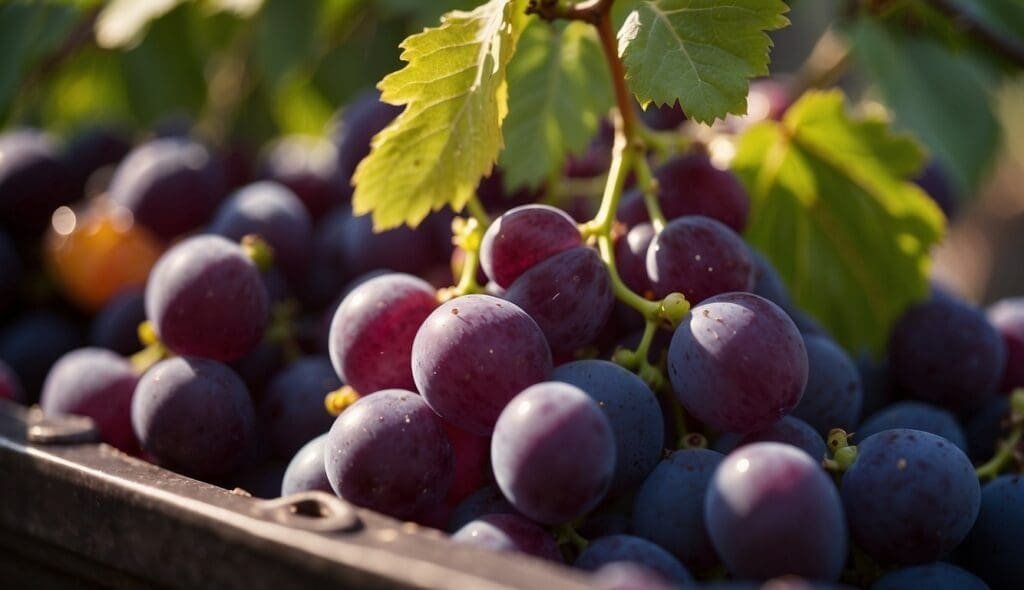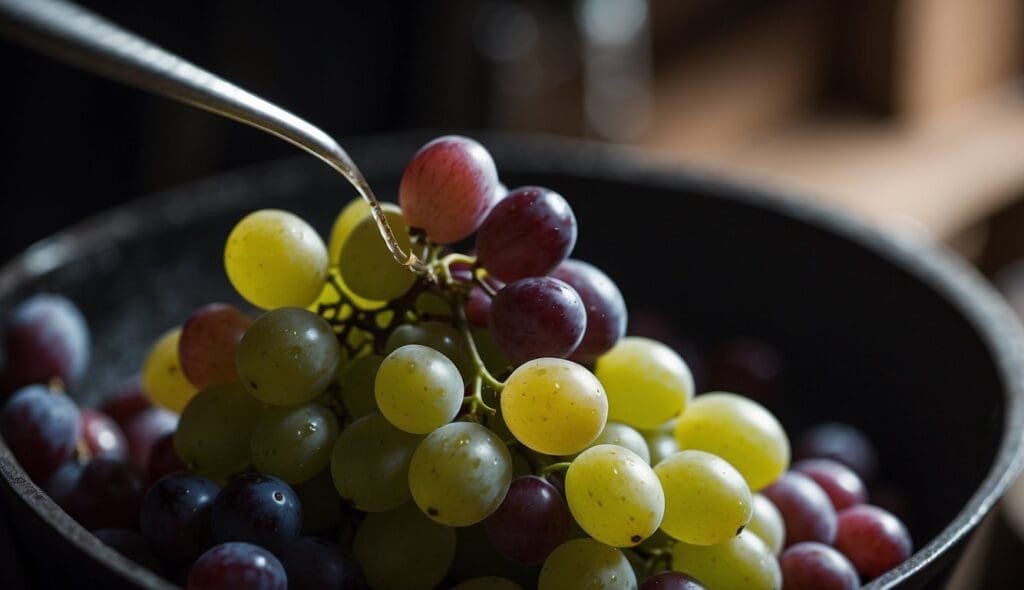Ever wondered what makes your favourite Australian wines so unique and tasty? The secret lies in grape must, a crucial ingredient in winemaking. What is grape must? This is the freshly crushed juice from grapes that includes the skins, seeds, and stems. When you sip a glass of wine, what you’re tasting starts here.

Grape must is vital for creating wine and even balsamic vinegar. Its sweet juice contains natural sugars that are necessary for fermentation. This process transforms the sugars into alcohol, giving wine its alcoholic content and unique flavour profiles.
Different Australian varietals, like Shiraz and Chardonnay, owe much of their character to the quality of their grape must. The sugar levels, acidity, and even the microbes present in the must play a significant role in shaping the final product, making each bottle a unique experience.
Composition and Production of Grape Must

Grape must, which includes the juice, skins, seeds, and stems of grapes, is essential in winemaking. It affects the flavour, sweetness, and overall quality of the wine.
Varieties and Characteristics
The composition of grape must varies depending on the type of grapes used. White grape must and red grape must have different profiles, contributing to distinct flavours and colours in wines.
For some Australian varietals, the must from Shiraz grapes offers deep flavours and higher tannin levels. Meanwhile, Chardonnay must is lighter and more acidic. The seeds, skins, and stems all contribute to the final taste and texture of the wine. Proper balancing of these elements is crucial to ensure quality.
Winemaking Process and the Role of Must
In winemaking, grape must is formed by crushing grapes to release their juice along with the skins, seeds, and stems. The fermentation process begins when yeast is added to this mixture. The yeast consumes the sugars in the must, producing alcohol and carbon dioxide.
Pomace, the solid part of the must, is often pressed again to extract more juice. Each stage in treating the must affects the wine’s sweetness, alcohol content, and flavour. Using must from Australian varietals can significantly influence the outcome, whether it’s a full-bodied red or a crisp white wine.
Nutritional Value and Health Benefits
Grape must is rich in nutrients and compounds that can benefit health. It contains antioxidants, vitamins, and minerals from the grapes. The seeds and skins are particularly high in polyphenols.
Unfermented juice is also packed with natural sugars, providing a sweet taste. While these sugars turn into alcohol during fermentation, the unfermented must is commonly used in cooking and non-alcoholic beverages. Adding grape must to your diet can offer health benefits like improved digestion and a boost in antioxidants, essential for fighting free radicals.
You can enjoy these benefits by using products made from grape must, such as balsamic vinegar or grape must syrup, popular in Australian culinary traditions.
Culinary Applications and Preservation
Grape must has several culinary uses beyond winemaking. In cooking, it can be transformed into syrups and used in desserts and pastries. For instance, moustokouloura, traditional Greek cookies, use grape must to enhance texture and flavour.
Fresh grape must is also used to create grape must syrup, a natural sweetener rich in antioxidants, vitamins, and minerals. This syrup can replace honey or sugar in pastries and yoghurt toppings.
In making balsamic vinegar, grape must is aged in wooden barrels, which can last from several years to decades. This process gives the vinegar its tangy and sweet flavours, along with its dark colour and thick consistency. Traditional balsamic vinegar is noted for its rich taste and is often protected by designation of origin standards.
You can incorporate grape must into salad dressings, giving them a unique sweetness and acidity. It’s also an essential ingredient for various sauces and marinades, pairing well with chicken, meat, and vegetables. Concentrated grape must can be boiled down to create glazes for meats, providing a caramelised finish.
For preservation, grape must can be stored in sealed containers in a cool place. Regularly used in the kitchen, it keeps well when refrigerated, maintaining its natural sweetness and flavour.
Aging grape must in barrels enriches its flavour profile by allowing it to absorb elements from the wood, creating complex layers of taste similar to those found in aged wines. Using Australian varietals like Shiraz for aging can produce exceptional results.
In baking, you can use grape must to replace part of the liquid in recipes, introducing a subtle sweet note and enhancing the overall texture. Combining grape must with nuts or walnuts can create delightful flavour experiences in your dishes.
By including grape must in your cooking, you elevate simple recipes into extraordinary culinary creations.
Frequently Asked Questions
Grape must is essential in winemaking and has unique properties that distinguish it from regular grape juice. It also has varying applications in both the culinary world and health.
What components constitute grape must?
Grape must is made from freshly crushed grapes. It includes the juice, skins, seeds, and stems. This mixture is key for making wine and other products.
Can consuming grape must contribute to a healthy diet?
Yes, grape must contains antioxidants and vitamins. These nutrients can support your overall health when consumed in moderation.
Does grape must contain any alcoholic content?
Grape must itself does not contain alcohol. It is the unfermented juice. Alcohol forms only after fermentation, which is a different process.
What are the recognised uses for grape must?
Grape must is used to make wine, balsamic vinegar, and grape syrup. In cooking, it adds flavour to desserts and pastries. It is also used for producing certain health supplements.
How does grape must differ from ordinary grape juice?
Grape must contains skins, seeds, and stems, unlike regular grape juice, which is filtered. This complete mix contributes to the unique taste and nutritional profile of grape must.
Is there any sugar content present in grape must?
Yes, grape must naturally contains sugars from the grapes. The sugar level can vary depending on the grape variety and ripeness, which influences the sweetness and fermentation process.
User Review
( votes)Sip smarter, subscribe now!
Subscribe for gourmet tips, event updates, travel ideas, and a free e-book on Food Pairings. Start your journey to culinary and travel excellence!













